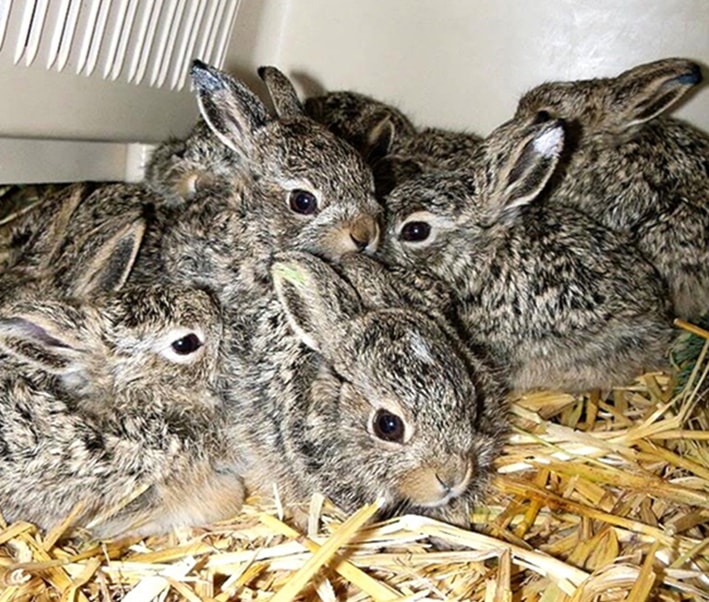It’s baby bunny season and, as always, Medicine River Wildlife Centre recommends a hands-off approach.
Executive director Carol Kelly said people should leave baby bunnies alone unless they are injured or you know that the mother is dead.
“I’m expecting the next phone call to be about the first wave of baby bunnies,” said Kelly on Monday about the babies born from the first breeding of the spring season.
She said from April to late August, the jackrabbits that people see in urban areas will breed four times. Each wave could bring one to four dozen bunnies to wildlife centre.
And many don’t need to be there.
“There are tons of babies that will be born. Unless there is a bad situation that you need our help with, leave them where they are. The mother bunny knows what she’s doing.”
She said one exception is if a baby bunny is spotted on the road. In that case, people should carefully and quickly pick it up in their hands and put it under the nearest bush.
“The only defence they have is to sit absolutely still so because they sit still, people mistake that they like them.”
Petting or handling a wild baby bunny causes it extreme stress and they can die of capture myopathy, she said.
Kelly said a few years ago she heard from a woman who stopped worrying about baby bunnies in her yard after she saw how a mother hare took care of her babies.
“(The mother hare) put out this call we can’t hear. All five babies ran to her, scooched underneath her, nursed for a few minutes, then they all ran away again,” Kelly said.
She predicted the mostly mild winter will mean lots of baby deer, birds and bunnies, and plenty of calls to the wildlife centre from Central Albertans fearing those babies need help.
“We estimate about 40 per cent of calls are ‘kidnapped babies.’ ”
She said often a baby bird can be returned to its parents by holding the baby in the air. If its parents are nearby and hear their baby squawk, they come to the rescue.
“When they come out of the nest, they can’t fly at first. They take several days to learn so we get a lot of calls because of this little one on the ground that can’t fly.”
Keeping cats indoors is another way to protect young bunnies and birds.
Kelly said Red Deer residents shouldn’t be surprised if they spot an assortment of baby wildlife, including fawns.
“If a fawn is all curled up neatly in a little ball, in the grass or under a tree, that’s exactly what they’re suppose to be doing. Occasionally these urban deer will leave baby on a back doorstep because I guess they feel it’s camouflaged and safe. They don’t realize in the morning the business is going to open and there will be a lot of people so we have had to move them.”
She said people should also maintain their yards so they don’t attract unwanted wildlife, like skunks, by properly enclosing sheds and decks so animals cannot live beneath those structures, and by not leaving pet food outside or using low-lying bird feeders.
And don’t feed wildlife, she said.
“They do really well on their own without us.”
Kelly advised that people call the wildlife centre if they have any questions, preferably before they intervene.
“What we’re trying to do is minimize the ones that don’t need to be (at the wildlife centre). That gives us more time to spend with the ones that are injured and do need attention.”
For information, call Medicine River Wildlife Centre at 403-728-3467.
szielinski@www.reddeeradvocate.com
